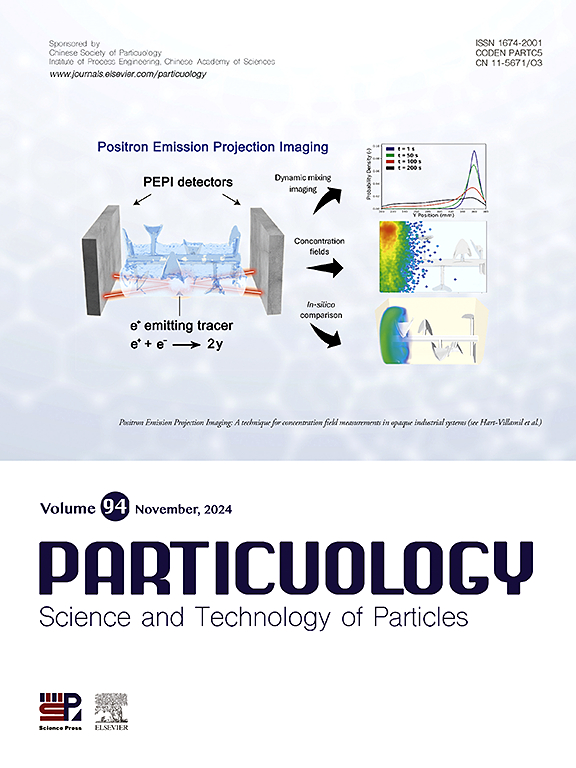Experimental and numerical simulation study of particles flow in the microchannel equipped with fan-shaped rib on sidewall
IF 4.1
2区 材料科学
Q2 ENGINEERING, CHEMICAL
引用次数: 0
Abstract
Microchannels are widely used in electronic device cooling due to their efficient heat dissipation performance, but particle deposition is still a major challenge limiting their performance. To design and optimize efficient microfluidic devices, this paper proposes to introduce fan-shaped ribs within the microchannels to reduce particle deposition. The placement of fan ribs of different heights in the microchannel was first experimentally determined, and then the particle motion characteristics were further investigated by numerical simulations. The results show that the fan-shaped ribs can effectively reduce particle deposition and exhibit greater deposition inhibition with increasing rib height. The channel constriction induced by the rib structure promotes the radial diffusion of particles in the downstream, and at the same time significantly enhances the radial component of the particle flow, which is improved by 5.76 %, 7.98 %, and 10.86 %, respectively. In addition, recursive analysis revealed that the incorporation of fan-shaped ribs shifted the particle flow from a homogeneous, periodic mode to a more abrupt diffusion mode, which contributed to the improvement of particle dispersion. This study provides a new strategy without the use of surfactants, which provides a reference for the optimized design of microchannel cooling systems.

求助全文
约1分钟内获得全文
求助全文
来源期刊

Particuology
工程技术-材料科学:综合
CiteScore
6.70
自引率
2.90%
发文量
1730
审稿时长
32 days
期刊介绍:
The word ‘particuology’ was coined to parallel the discipline for the science and technology of particles.
Particuology is an interdisciplinary journal that publishes frontier research articles and critical reviews on the discovery, formulation and engineering of particulate materials, processes and systems. It especially welcomes contributions utilising advanced theoretical, modelling and measurement methods to enable the discovery and creation of new particulate materials, and the manufacturing of functional particulate-based products, such as sensors.
Papers are handled by Thematic Editors who oversee contributions from specific subject fields. These fields are classified into: Particle Synthesis and Modification; Particle Characterization and Measurement; Granular Systems and Bulk Solids Technology; Fluidization and Particle-Fluid Systems; Aerosols; and Applications of Particle Technology.
Key topics concerning the creation and processing of particulates include:
-Modelling and simulation of particle formation, collective behaviour of particles and systems for particle production over a broad spectrum of length scales
-Mining of experimental data for particle synthesis and surface properties to facilitate the creation of new materials and processes
-Particle design and preparation including controlled response and sensing functionalities in formation, delivery systems and biological systems, etc.
-Experimental and computational methods for visualization and analysis of particulate system.
These topics are broadly relevant to the production of materials, pharmaceuticals and food, and to the conversion of energy resources to fuels and protection of the environment.
 求助内容:
求助内容: 应助结果提醒方式:
应助结果提醒方式:


